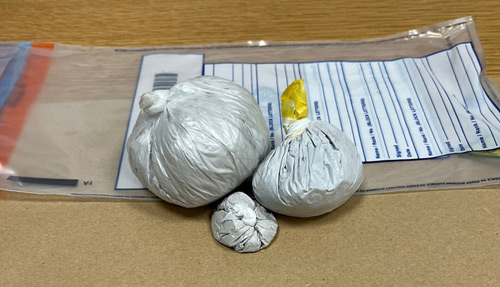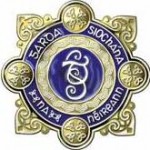What has Thurles Railway Station, Co. Tipperary and the English Houses of Parliament got in common?
Mr Sancton Wood (1815–1886) was an English architect, born in the London Borough of Hackney. He was the son of Mr John and Mrs Harriet (née Russell) Wood, his mother being a niece of the painter and antiquarian draughtsman, Mr Richard Smirke, (1778–1815).
Back in 1845, the first year of the Great Famine here in Ireland, Mr Sancton Wood won a competition for the designing of Kingsbridge StationA. in Dublin (Built 1846). The competition, commissioned by the Great Southern & Western Railway Company, saw Wood’s designs selected unanimously by the railway company’s London Committee, despite the fact that the Dublin Committee had favoured the design of an Irish architect, Mr John Skipton Mulvany, latter a founder member of the Royal Hibernian Academy of Art, situated in our capital city of Dublin.
A. Note: Kingsbridge Station in Dublin of course is today called Heuston Station, renamed in honour of Seán Heuston, an executed leader of the 1916 Easter Rising, who had worked in the offices of Kingsbridge Station.
In that same year Mr Sancton Wood was appointed as architect to the Great Southern & Western Railway Company; designing all the railway station buildings between Monasterevin, Co. Kildare (including Thurles Railway Station) and Limerick Junction inc..
All of these station houses, with the exception of Limerick Junction station, are designed in a gabled picturesque Gothic style. Mr Wood also later became an architect to the Irish South Eastern Railway Company, which developed their railway line between Carlow and Kilkenny from 1848-1850. Six years later Mr Woods work, with reference to Ireland, appears to have ceased altogether.

Top Pic.: Thurles in 1846, before the introduction of the Railway in 1847/48. Middle Pic.: Back entrance view of Thurles railway station. Bottom Pic.: Front entrance of Thurles railway station.
Architect Mr Sancton Wood – The Early Years
Having developed a taste for drawing, Sancton Wood’s mother arranged to have him admitted to the office of his cousin, Sir Robert Smirke, RA. (Royal Academy), latter then an artist and leading London architect. From here he was transferred to Mr. Sydney Smirke, R.A., who succeeded to his brother’s practice. He remained with Mr Sydney Smirke for several years, working on the drawings of important works; which included sketches of the designs for the rebuilding of the Houses of Parliament, which Sir Robert Smirke had already prepared for Sir Robert Peel’sB. the Prime Minister of the then English Conservative Party government,(1834–35), following a fire on October 16th, 1834.
B. Sir Robert Peel had entered politics in 1809, at the age of just 21 years, as an MP for the Irish rotten borough of Cashel, just 14 miles from Thurles here in Co. Tipperary. The son of a wealthy textile-manufacturer and politician 1st Baronet Sir Robert Peel, would ensure that his son Robert would become Chief Secretary for Ireland and the first future Prime Minister of England, from an industrial business background. With a double first in Classics and Mathematics from Christ Church, Oxford, and law training at Lincoln’s Inn; in 1809 Peel would become known as the father of modern policing, with his forces nicknamed ‘bobbies’ in England and less affectionately known as ‘peelers’ here in Ireland. In 1829, in setting up the principles of policing in a democracy, Peel declared that, quote: “The police are the public and the public are the police.”
It was Prime Minister Sir Robert Peel who first imported, secretly, maize into Ireland for the first time, which due to the lack of knowledge on how to properly cook it; same became known as “Peel’s brimstone”. His attempt to breech a ‘Laissez-faire (or ‘Let Do’) system of economics in Ireland, saw him loose out to Lord John Russell as Whig Party Prime Minister in 1846.
Following this Houses of Parliament fireC. the immediate priority for the British government, was to provide accommodation for the next Parliament, and so the ‘Painted Chamber’ (Latter the medieval Palace of Westminster), and the ‘White Chamber’ (Latter the meeting place of the House of Lords from 1801), were both hastily re-roofed and repaired for temporary use by the Houses of Lords and Commons respectively, under the direction of the only remaining architect of the Office of Works, the said same Sir Robert Smirke.
C. Yet, one other famous artist, William Turner RA. [Joseph Mallord William Turner (1775-1851)], had watched the burning of the House of Lords and Commons in 1834, before painting several canvasses depicting the scene.
Sir Robert Smirke’s temporary repairs to House of Lords and Commons were demolished in 1851, with the House of Commons deciding in favour of an open competition for the proposed rebuild. Alas, Sir Charles Barry conceived the eventual winning design for the New Houses of Parliament; the construction of which he continued to supervise until his own death in 1860.
Mr Sancton Wood died at his home in Putney Hill, in south-west London, England SW, on April 18th 1886, and is buried in Putney Cemetery.
Today, Thurles Railway Station, which officially opened on March 13th 1848, boasts two through platforms and one terminating platform and remains a major stopping stage on the Dublin-Cork railway line, with numerous trains running hourly in both directions daily. Three times winner of the Irish Rail Best Intercity Station prize, it was also from here that on August 5th 1848 William Smith O’Brien was arrested, following his unsuccessful insurrection in Ballingarry, South Tipperary, known by the British disparagingly as the “Battle of the Widow McCormack Cabbage Patch”.









Recent Comments